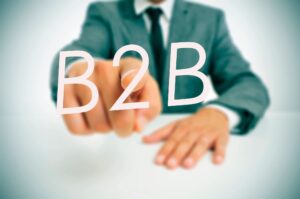Have you ever counted how many software subscriptions your company pays for each month? Moreover, have you noticed that most of these tools sit unused for weeks at a time? Well, there’s something strange happening in the B2B world, and it’s creating a problem nobody wants to talk about.
The Hidden Psychology of Software Hoarding
Business leaders are turning into digital hoarders, and SaaS companies are making it worse without realizing it. Furthermore, this isn’t about buying too much stuff for your home. Instead, it’s about collecting software tools like they’re going out of style.
Think about your own company for a moment. Additionally, you probably have Slack for communication, Zoom for meetings, Asana for project management, HubSpot for sales, and at least five other tools you forgot you’re paying for. However, here’s the interesting part: your team probably uses only two or three of them regularly.
This pattern is happening everywhere, and it’s costing businesses millions of dollars. Moreover, it’s creating stress for employees who feel overwhelmed by too many platforms. Yet, companies keep adding new tools instead of making the most of what they already have.
Why We Keep Buying Software We Don’t Need
The reason behind this behavior is surprisingly simple. Additionally, it has nothing to do with actual business needs. Instead, it’s about fear and hope working together in dangerous ways.
Fear tells us we might miss out on something important. Therefore, when a new tool promises to solve our problems, we feel like we have to try it. Similarly, hope convinces us that the next software will finally be the perfect solution.
Furthermore, SaaS companies have become experts at selling dreams instead of reality. They show you perfect demos where everything works smoothly. However, they don’t show you the months of setup time, employee training, and integration headaches that come afterward.
For example, look at how Salesforce markets itself. They promise to transform your entire sales process. Nevertheless, most companies end up using only basic features and struggling with the complexity. Yet, they keep paying because they hope to unlock its full potential someday.
The Real Cost of Software Hoarding
Most business owners think about subscription costs in simple terms. Specifically, they see a $50 monthly fee and think it’s not a big deal. However, the real cost goes far beyond the subscription price.
First, there’s the time cost. Moreover, every new tool requires training, setup, and ongoing maintenance. Additionally, switching between different platforms wastes hours every week. Therefore, that “cheap” $50 tool might actually cost thousands in lost productivity.
Second, there’s the mental cost. Furthermore, employees get frustrated when they have to learn new systems constantly. As a result, they become less efficient and more stressed. Similarly, decision fatigue sets in when people have too many options for simple tasks.
Third, there’s the opportunity cost. Instead of mastering one powerful tool, teams spread their attention across many mediocre ones. Consequently, they never become truly efficient at anything.
The Software Graveyard in Every Company
Walk through any company’s software stack, and you’ll find what I call the “software graveyard.” Additionally, these are tools that someone bought with good intentions but now sit forgotten.
Usually, it starts like this: someone attends a conference and sees an exciting demo. Then, they convince their boss to try the new tool. However, after a few weeks of struggling with setup and training, the excitement fades. Nevertheless, the subscription keeps running because canceling feels like admitting failure.
Meanwhile, companies like Zapier and Integromat are making millions by helping businesses connect all these disconnected tools. Furthermore, this creates even more complexity instead of solving the original problem.
The irony is obvious: we’re buying software to make work easier, but we’re actually making it harder. Moreover, we’re paying other companies to fix problems we created by buying too much software in the first place.
The Netflix Effect on Business Software
Here’s where things get really interesting. Additionally, SaaS companies have learned a trick from Netflix and other consumer apps. They make it incredibly easy to start using their software but surprisingly difficult to leave.
First, they offer free trials that seem risk-free. However, these trials are designed to create small commitments that lead to bigger ones. Furthermore, once you’ve uploaded your data and set up workflows, switching becomes painful.
Then, they use what psychologists call “loss aversion.” Specifically, they make you feel like you’ll lose something valuable if you cancel. Therefore, you keep paying even when you’re not getting much value.
This explains why Microsoft Office 365 is so successful. It’s not necessarily the best tool for every task. Instead, it’s good enough at everything, and switching away feels too risky.
The Rise of Digital Minimalism in Business
Smart companies are starting to fight back against software hoarding. Moreover, they’re applying the same principles that helped people declutter their homes to their digital environments.
The concept is simple: instead of adding new tools, focus on using existing ones better. Additionally, this approach saves money and reduces complexity at the same time.
For instance, companies are discovering that Notion can replace five different tools if used properly. Similarly, teams are finding creative ways to use Slack for project management instead of buying separate software.
Furthermore, this trend aligns perfectly with the silent revolution happening in B2B SaaS, where companies are focusing more on human connections rather than just adding features.
Breaking Free from the Subscription Trap
If you want to escape the subscription trap, start by doing a software audit. Additionally, list every tool your company pays for and honestly assess how much value each one provides.
Ask these simple questions:
- Would our business break if we stopped using this tool tomorrow?
- Do we use more than 50% of its features?
- Could we accomplish the same results with something we already have?
- Is this tool making our work easier or more complicated?
Moreover, be honest about the answers. If a tool isn’t essential and well-used, it’s probably time to let it go.
Next, focus on mastering fewer tools instead of trying many. Furthermore, invest in training your team to use your core platforms more effectively. Often, you’ll discover powerful features you never knew existed.
Finally, resist the temptation to buy new software for at least six months. Instead, explore creative ways to solve problems with your current tools. Therefore, you might be surprised by what you can accomplish.
The Future of Smart Software Buying
The companies that succeed in the next decade won’t be those with the most software. Instead, they’ll be the ones that use technology thoughtfully and purposefully.
This means buying software based on clear business outcomes, not exciting demos. Moreover, it means measuring success by results, not by the number of tools in your stack.
Furthermore, it means recognizing that sometimes the best solution is the simplest one. Therefore, before adding complexity, always ask if there’s a simpler way to achieve the same goal.
The subscription trap is real, but it’s not permanent. Additionally, companies that recognize this pattern can break free and build more efficient, focused operations. Moreover, they’ll save money and reduce stress in the process.





